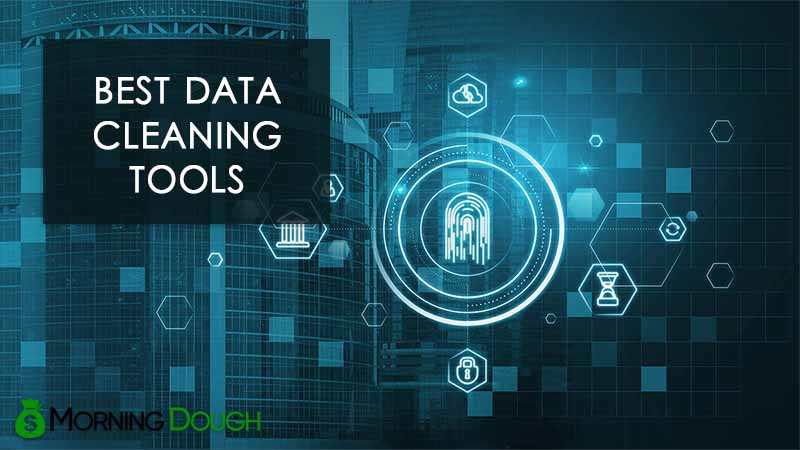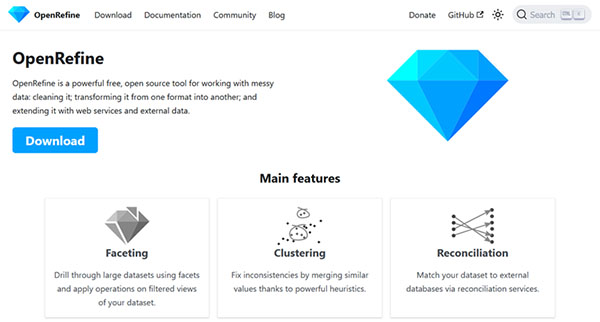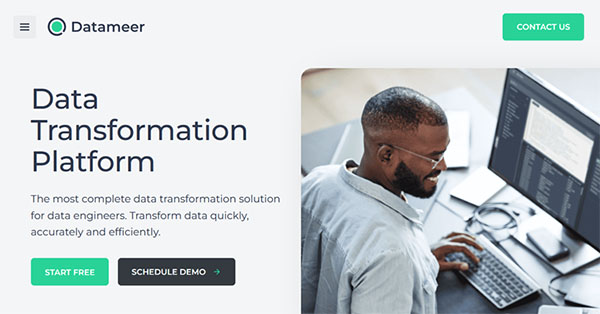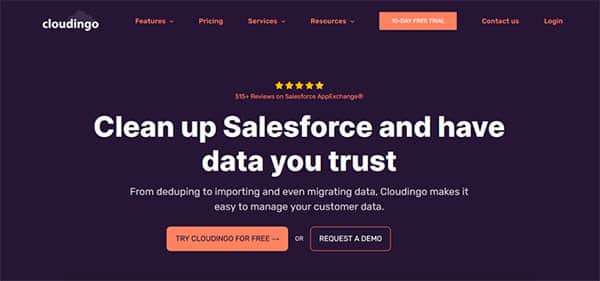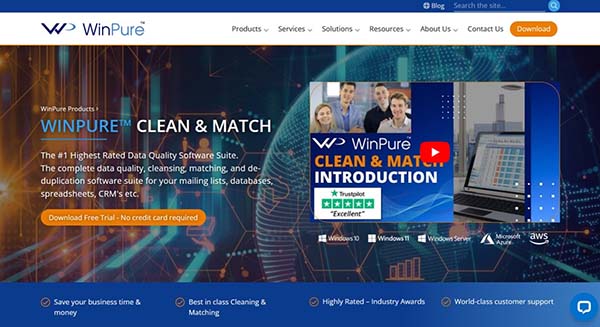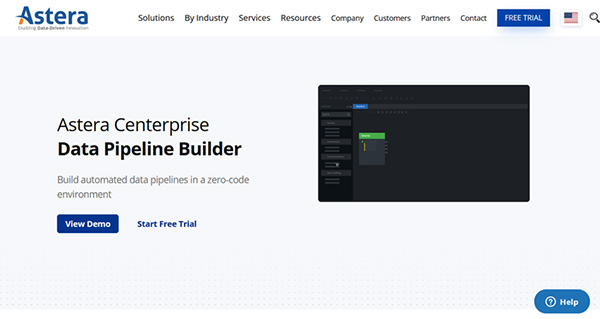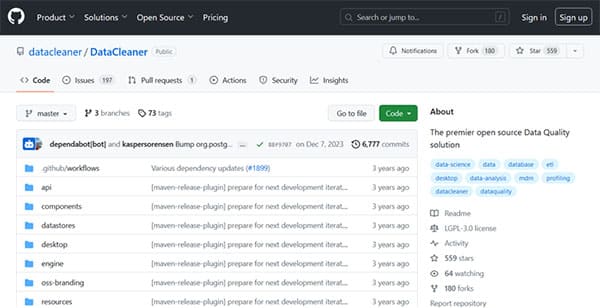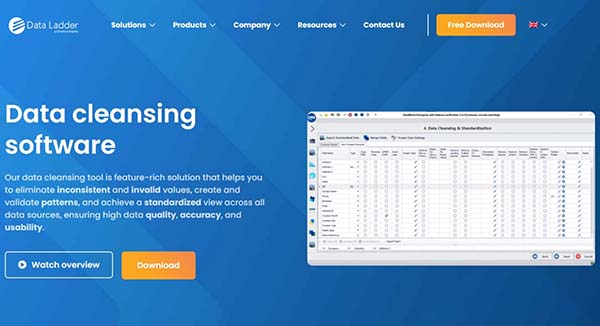8 Best Data Cleaning Tools
In the digital age, data is the new gold. However, not all data is valuable. Dirty data, or data that is incorrect, duplicated, or incomplete, can wreak havoc on a business’s analytics, leading to poor insights and inconsistent assessments. This can result in increased operational costs and customer dissatisfaction. To combat this, businesses turn to data cleaning tools. These tools use artificial intelligence to save organizations massive amounts of time and resources by cleaning up their data. This article will delve into the best data cleaning tools available, why they are necessary, and how to choose the right one for your needs.
The Need for Best Data Cleaning Tools
Data cleaning is the last process of data entry and revolves around specific rules. It involves the deletion of wrong, corrupted, duplicated, or incomplete information from a dataset. By cleaning bad data, organizations can eliminate poor-quality results. This is why it is crucial to carry out data cleaning before modeling and analysis. It can also ensure that you only have the most recent files and important documents, or that you don’t have too much personal information that can pose a security risk.
The rise of available data has also caused a surge in data cleaning tools. These tools are designed to handle the many errors in data that can occur from things like bad data entry, the source of data, mismatch of source and destination, and invalid calculation. When these errors occur, the data must be cleaned. This is where best data cleaning tools come in. They are designed to handle these errors and ensure that the data used by organizations is as accurate and reliable as possible.
8 Best Data Cleaning Tools
How to choose the Best Data Cleaning Tools?
When choosing the best data cleaning tools, there are several parameters and features you need to consider. First, you need to identify the critical data fields. Companies have access to more data now than ever before, but not all of it is equally useful. The first step in data cleansing is to determine which types of data or data fields are critical. After the relevant data fields are identified, the data they contain is collected, sorted, and organized.
Another important factor to consider is compatibility. Your data may be housed in multiple different systems, so it’s important to choose a tool that can work with all of them. The tool should also support a wide range of data formats to ensure that it can handle all the data you need to clean.
Best Data Cleaning Tools (Free and Paid)
1. OpenRefine
OpenRefine is a robust, free, and open-source data cleaning tool designed to handle and streamline the process of working with messy data. It is a versatile tool that allows users to clean, transform, and extend their data with web services and external data. OpenRefine is not just a data cleaning tool; it’s a comprehensive solution for data transformation and extension, making it an invaluable asset for anyone dealing with large, complex datasets.
What does OpenRefine do?
OpenRefine is a data cleaning tool that specializes in dealing with messy data. It provides users with the ability to clean their data, transforming it from one format to another, and extending it with web services and external data. OpenRefine is designed to handle large datasets, allowing users to drill through the data using facets and apply operations on filtered views of the dataset. It also offers powerful heuristics to fix inconsistencies by merging similar values. Furthermore, OpenRefine can match your dataset to external databases via reconciliation services, providing a more comprehensive view of your data, putting it at the top of the best data cleaning tools.
OpenRefine Key Features
Faceting: OpenRefine allows users to drill through large datasets using facets and apply operations on filtered views of the dataset. This feature enables users to focus on specific aspects of their data, making it easier to analyze and interpret.
Clustering: OpenRefine can fix inconsistencies in data by merging similar values. This is done through powerful heuristics, which help to ensure that the data is as accurate and consistent as possible.
Reconciliation: With OpenRefine, users can match their dataset to external databases via reconciliation services. This feature extends the reach of the data, providing a more comprehensive view and allowing for more accurate analyses.
Infinite Undo/Redo: OpenRefine provides the ability to rewind to any previous state of your dataset and replay your operation history on a new version of it. This feature ensures that no data is ever truly lost and that users can experiment with different operations without fear of irreversible changes.
Privacy: OpenRefine cleans data on the user’s machine, not in a cloud. This ensures that the user’s data remains private and secure.
Wikibase: OpenRefine allows users to contribute to Wikidata, the free knowledge base anyone can edit, and other Wikibase instances. This feature provides users with the opportunity to contribute to and benefit from a larger community of data.
OpenRefine Pros and Cons
OpenRefine Pros
- Free and open-source
- Powerful data cleaning and transformation features
- Ability to extend data with web services
- Infinite undo/redo feature
- Ensures data privacy
- Allows contribution to Wikidata
OpenRefine Cons
- May have a steep learning curve for beginners
- No cloud-based option
- Limited customer support due to open-source nature
OpenRefine Pricing Plans
OpenRefine offers a free data cleaning tool but also accepts donations to help maintain and further develop the tool.
OpenRefine accepts debit and credit cards, and PayPal for donations.
2. Datameer
Datameer is a comprehensive data cleaning tool and data transformation platform designed to streamline data processes, reduce duplicate work, and keep data accessible. It is purpose-built for Snowflake, integrating seamlessly with modern data stacks. The platform offers advanced data transformation, enrichment, and automation capabilities, driving unparalleled depth in insights. It is designed to transform data quickly, accurately, and efficiently, making it a valuable tool for data engineers.
What does Datameer do?
Datameer is a multi-persona SaaS solution for data transformation in Snowflake. It provides user-friendly access to data from your Snowflake instance and executes various transformations on your data, such as blending, filtering, and extracting. It allows users to collaboratively build new datasets to answer analytic questions and instantly publish results to your Snowflake instance. It also manages complex pipelines with the grouping feature, refactors pipelines, and migrates from a development environment to a productive environment by automating the workflow by scheduling deployments to your Snowflake, making it to one of the best data cleaning tools.
Datameer Key Features
User-Friendly Access: Datameer provides easy and user-friendly access to data from your Snowflake instance, making it simple for users to interact with their data.
Data Transformation: Datameer executes various transformations on your data, such as blending, filtering, and extracting, allowing users to manipulate their data as needed.
Collaborative Building: Datameer allows users to collaboratively build new datasets to answer analytic questions, fostering teamwork and shared insights.
Instant Publishing: Datameer enables users to instantly publish results to their Snowflake instance, ensuring that insights are readily available for decision-making.
Pipeline Management: Datameer manages complex pipelines with the grouping feature, allowing for efficient and organized data processes.
Workflow Automation: Datameer automates the workflow by scheduling deployments to your Snowflake, reducing manual work and increasing efficiency.
Datameer Pros and Cons
Datameer Pros
- User-friendly access
- Advanced data transformation capabilities
- Collaborative building of datasets
- Instant publishing of results
- Efficient pipeline management
- Workflow automation
Datameer Cons
- May require some learning curve
- Pricing information not readily available
Datameer Pricing Plans
Datameer pricing plans are provided after a demo. Users need to contact the sales team.
3. Cloudingo
Cloudingo is a leading data cleaning tool designed to help businesses maintain high-quality data. It is a comprehensive solution that addresses the common problem of poor data quality, which can be a significant roadblock to success. Cloudingo is known for its ability to identify and eliminate duplicate data, thereby saving businesses countless hours and reducing the need for complex spreadsheets. It is a tool that can be set up in minutes, allowing businesses to quickly identify the extent of their data duplication problem and start improving their data quality.
What does Cloudingo do?
Cloudingo is primarily a data cleansing tool. It works by scanning a company’s data to identify duplicates and other quality issues. Once these issues are identified, Cloudingo provides the tools to clean up the data, removing duplicates and improving overall data quality. This process can have a significant positive impact on a business, as high-quality data can lead to more accurate reporting, better decision making, and improved operational efficiency.
Cloudingo Key Features
Data Cleansing: Cloudingo excels in data cleansing, providing businesses with the tools to identify and eliminate duplicate data, thereby improving overall data quality.
Quick Setup: Cloudingo can be set up in minutes, allowing businesses to quickly start improving their data quality.
Duplicate Identification: One of Cloudingo’s key features is its ability to identify duplicate data, a common problem that can lead to inaccurate reporting and decision making.
Impactful Reporting: Cloudingo provides impactful reporting, giving businesses insight into their data quality and the progress of their data cleansing efforts.
Automation Preview Report: This feature allows businesses to preview the results of their data cleansing efforts before they are implemented, providing an additional layer of control.
Support and Security: Cloudingo offers robust support options, including email support and a documentation and video library. It also prioritizes security, with features like 256-bit SSL encryption and GDPR compliance.
Cloudingo Pros and Cons
Cloudingo Pros
- Comprehensive data cleansing
- Quick setup
- Duplicate identification
- Impactful reporting
- Automation preview report
- Robust support and security
Cloudingo Cons
- Pricing may be high for small businesses
- Limited API calls per day
- Additional features require add-ons
Cloudingo Pricing Plans
Cloudingo offers three pricing plans: Standard, Professional, and Enterprise.
Standard Plan: The Standard Plan is the entry-level offering, with licenses starting at $2,500 per year. It includes the core data cleansing and duplicate identification features, making it a good choice for businesses just starting their data quality journey.
Professional Plan: The Professional Plan, priced at $6,000 per year, includes all the features of the Standard Plan, plus additional features like Marketo integration and API integration with up to 1,000 calls per day. It also includes progress and tracking reports, making it a more comprehensive solution for businesses with more complex data needs.
Enterprise Plan: The Enterprise Plan, priced at $10,000 per year, is the most comprehensive offering, including all the features of the Professional Plan, plus additional support options and increased security features. It is designed for large businesses with extensive data needs.
Cloudingo accepts debit and credit cards, PayPal, and bank wire transfer for payments.
4. WinPure
WinPure stands out as a comprehensive data cleaning tool and matching suite designed to enhance the quality of data across various business databases. It is tailored to streamline the process of cleaning, de-duplicating, and consolidating data, which is crucial for businesses that rely on accurate and up-to-date information for decision-making. WinPure’s intuitive interface and robust features make it accessible to both technical and non-technical users, ensuring that organizations of all sizes can maintain high-quality data with ease.
What does WinPure do?
WinPure specializes in improving data quality through a suite of tools that cleanse, match, and de-duplicate data within mailing lists, databases, spreadsheets, and CRM systems. It is designed to address common data quality issues such as incorrect, incomplete, or redundant information, which can lead to inefficiencies and inaccuracies in business operations. By utilizing WinPure, organizations can ensure their data is consistent, reliable, and ready for use in analytics, marketing campaigns, customer relationship management, and other critical business functions.
WinPure Key Features
Data Cleansing: WinPure provides advanced data cleansing capabilities, allowing users to correct and standardize data across their databases.
Data Matching: The tool includes sophisticated algorithms for identifying and merging duplicate records, ensuring databases are free of redundancies.
Data Profiling: WinPure offers data profiling tools that analyze data for errors and provide detailed statistics, helping users understand the quality of their data.
User-Friendly Interface: Designed with a focus on usability, WinPure’s interface is intuitive, making it accessible for users with varying levels of technical expertise.
Customizable Reports: Users can generate detailed reports on data quality and matching results, which can be customized to meet specific organizational needs.
Multiple Data Formats: WinPure supports a wide range of data formats, making it versatile for different types of data cleansing and matching projects.
WinPure Pros and Cons
WinPure Pros
- User-friendly
- Advanced matching
- Custom reports
- Data profiling
- Versatile formats
- No setup fee
WinPure Cons
- No free plan is available
- No mobile application
WinPure Pricing Plans
WinPure offers several pricing plans to accommodate the needs of different businesses:
Small Business Plan: Tailored for smaller teams, this plan includes essential data cleansing and matching features, priced at $1,999.
Pro Business Plan: Designed for professional users, this plan offers advanced capabilities and support for larger data sets.
Enterprise Plan: Aimed at large organizations, this plan provides comprehensive features, including enterprise-level support and scalability.
Enterprise Server Plan: This top-tier plan is intended for businesses that require server-based deployment with full functionality and maximum performance.
For the Pro Business Plan, Enterprise Plan and Enterprise Plan pricing, users need to contact WinPure.
WinPure accepts debit and credit cards, and PayPal for payments.
5. Astera
Astera Centerprise stands out as a robust data integration solution designed to streamline the process of data extraction, transformation, and loading (ETL). It caters to businesses looking to cleanse, transform, and integrate data from a variety of sources into a centralized repository. With its user-friendly interface, Astera Centerprise simplifies complex data integration tasks, making it accessible for users without extensive programming knowledge. This data cleaning tool platform’s versatility is evident in its ability to handle a wide range of data formats and sources, ensuring that businesses can leverage their data assets effectively for better decision-making.
What does Astera do?
Astera Centerprise is engineered to facilitate seamless data integration across diverse systems and platforms. It provides a comprehensive suite of tools that enable users to connect to various data sources, perform intricate transformations, and automate workflows for efficient data management. The platform’s capabilities extend to data quality management, ensuring that the data being processed is accurate and reliable. Astera’s focus on delivering a code-free experience allows users to construct and execute data pipelines with minimal technical expertise, thereby democratizing data integration and empowering business users to contribute to data-driven initiatives.
Astera Key Features
Data Quality Management: Astera Centerprise emphasizes the importance of high-quality data with features that validate, clean, and standardize data to maintain its integrity throughout the integration process.
User-Friendly Design: The platform boasts a drag-and-drop interface that simplifies the creation of data integration workflows, making it accessible to users of all skill levels.
Connectivity: With a wide array of built-in connectors, Astera Centerprise ensures seamless integration with various data sources, including databases, cloud applications, and flat files.
Automation: Astera enables the automation of repetitive data integration tasks, allowing users to focus on more strategic activities by reducing manual effort.
Transformation Library: A comprehensive set of pre-built transformations allows users to manipulate data in numerous ways, such as sorting, aggregating, and normalizing.
Scalability: Designed to handle large volumes of data, Astera Centerprise scales to meet the growing data demands of businesses, ensuring performance is not compromised.
Astera Pros and Cons
Astera Pros
- User-friendly interface
- Extensive connectivity options
- Robust data quality features
- Code-free design
- Scalable architecture
- Comprehensive transformation tools
Astera Cons
- Learning curve for new users
- Pricing not available on website
Astera Pricing Plans
Astera offers a range of pricing plans to accommodate the diverse needs of businesses. The plans are designed to provide flexibility and scalability, ensuring that organizations of all sizes can find a suitable option. Users need to contact the sales team for pricing information.
6. Drake
Drake is a powerful, extensible, text-based data cleaning and workflow tool that is designed to simplify the process of data cleaning. It is an open-source tool that organizes command execution around data and its dependencies. Drake is designed to handle data processing steps, determining which commands to execute based on file timestamps and the order of execution based on dependencies. It is similar to GNU Make but is specifically designed for data workflow management. Drake is known for its simplicity and extensibility, making it a go-to tool for data scientists and analysts who need to clean and prepare their data for analysis.
What does Drake do?
Drake is a data cleaning and workflow tool that organizes command execution around data and its dependencies. It is designed to manage data processing steps, automatically determining which commands to execute based on file timestamps and the order of execution based on dependencies. Drake is particularly useful for managing complex data workflows, as it can handle multiple inputs and outputs and has integrated Hadoop Distributed File System (HDFS) support. It is designed to bring order to otherwise chaotic data workflows, making it easier for data scientists and analysts to clean and prepare their data for analysis.
Drake Key Features
Organized Command Execution: Drake organizes command execution around data and its dependencies. This feature allows for efficient management of complex data workflows.
Multiple Inputs and Outputs: Drake can handle multiple inputs and outputs, providing flexibility in managing data workflows.
Integrated HDFS Support: Drake has built-in Hadoop Distributed File System (HDFS) support, making it suitable for handling large datasets.
Text-Based Data Workflow: Drake is a text-based data workflow tool, making it easy to use and understand.
Extensibility: Drake is extensible, allowing developers to publish and use custom plugins that extend its functionality.
Simplicity: Despite its powerful features, Drake is simple to use, making it accessible to data scientists and analysts of all skill levels.
Drake Pros and Cons
Drake Pros
- Organized command execution
- Handles multiple inputs and outputs
- Integrated HDFS support
- Text-based data workflow
- Extensibility
- Simplicity
Drake Cons
- Requires technical expertise
- No GUI, text-based only
- Limited support and documentation
Drake Pricing Plans
Drake is an open-source tool, thus it offers free access for users to perform their required data cleaning operations.
7. Data Ladder
Data Ladder is a leading provider of data cleansing software, offering a comprehensive suite of tools designed to enhance the quality, accuracy, and usability of data across various sources. This feature-rich solution is designed to eliminate inconsistent and invalid values, create and validate patterns, and provide a standardized view of data, making it a trusted choice for businesses seeking to optimize their data management processes.
What does Data Ladder do?
Data Ladder offers a range of data management solutions, including data cleansing, data matching, and deduplication. The company’s flagship product, DataMatch Enterprise, is a versatile tool that allows businesses to import, profile, cleanse, and match data, regardless of the data format or source. It also offers advanced features such as email address cleaning, cross-column matching, and pattern matching. Data Ladder’s solutions are designed to help businesses get maximum value from their data by uncovering missed or overlooked matches using proprietary and established matching algorithms.
Data Ladder Key Features
Data Cleansing: Data Ladder’s data cleansing tools can be used to remove duplicate, inconsistent, and invalid values, ensuring high data quality and usability.
Data Matching: The company’s data matching tools allow businesses to uncover missed or overlooked matches, enhancing the reliability and accuracy of their data.
Deduplication: Data Ladder’s deduplication feature helps businesses eliminate duplicate entries in their data, improving efficiency and reducing storage costs.
Data Profiling: Data Ladder offers industry-leading data profiling tools that provide a comprehensive view of data, identifying patterns and flagging data cleansing opportunities.
Email Address Cleaning: This advanced feature finds errors in email addresses and automatically suggests corrections, enhancing the quality of contact data.
Cross-Column Matching: This feature allows businesses to match data across columns, which is useful when data entry errors put data in the wrong column.
Data Ladder Pros and Cons
Data Ladder Pros
- High data quality and accuracy
- Comprehensive suite of tools
- Advanced features like email address cleaning
- Cross-column matching capability
Data Ladder Cons
- May require a learning curve for new users
- Pricing not available on website
Data Ladder Pricing Plans
Data Ladder offers several pricing plans to cater to different business needs. Each plan comes with a unique set of features and is priced accordingly. Users need to contact the sales team for a demo and pricing information.
8. Melissa Clean Suite
Melissa Clean Suite is a robust data cleaning and management tool designed to enhance the quality of customer data within CRM systems like Salesforce and Microsoft Dynamics CRM. It stands out for its ability to provide a single, accurate view of customer data by ensuring that all global People Data—names, addresses, phones, and emails—are kept accurate and up-to-date. This suite is particularly valuable for businesses looking to maximize their CRM investments and improve customer experiences through reliable data.
What does Melissa Clean Suite do?
Melissa Clean Suite serves as a comprehensive solution for maintaining the integrity of customer data. It offers real-time and batch processing capabilities to correct, verify, and enrich contact information before and after it enters the CRM. The suite’s functionality extends to validating international addresses across 240 countries and appending demographic and firmographic data for better lead scoring and segmentation. By keeping contact data clean and current, Melissa Clean Suite aids in enhancing sales follow-up and marketing initiatives, ultimately protecting the quality of customer data.
Melissa Clean Suite Key Features
Global Address Verification: This feature ensures that international addresses are validated and standardized for over 240 countries, which is crucial for global businesses.
Data Enrichment: By adding demographic and firmographic details, Melissa Clean Suite enables more effective lead scoring, targeting, and segmentation.
Real-Time and Batch Processing: The suite offers options for data cleansing and quality protection in real-time at the point of entry or through batch processing for existing records.
Dynamic Data Refresh: Keeping customer data current is made easier with dynamic updates that reflect the latest information.
Data Share and In-Excel Collaboration: Users can share cleansed data and collaborate within Excel, streamlining workflows.
Autocomplete and Correction: Before data enters the CRM, this feature helps autocomplete, correct, and verify contacts, saving time and reducing errors.
Melissa Clean Suite Pros and Cons
Melissa Clean Suite Pros
- Global address validation
- Real-time data cleansing
- Batch processing
- Data enrichment
- Dynamic data refresh
- In-Excel collaboration
Melissa Clean Suite Cons
- Pricing not available on website
- Learning curve for new users
Melissa Clean Suite Pricing Plans
Melissa Clean Suite offers a credit-based pricing model, which provides flexibility for businesses of various sizes. The pricing plans are tailored to meet different requirements, and potential users are encouraged to contact Melissa for a demo to understand which plan best suits their needs.
Contact for a demo: Reach out to Melissa to discuss your specific needs and receive a tailored demonstration of the Clean Suite’s capabilities.
Melissa Clean Suite accepts various payment methods, including debit and credit cards, PayPal, and bank wire transfers, to accommodate the preferences of different users.
FAQs on Best Data Cleaning Tools
What is the Best Data Cleaning Tools?
Data cleaning tools, also known as data cleansing or data scrubbing tools, are software applications designed to clean up data. They do this by identifying and correcting or removing data that is incorrect, duplicated, or incomplete. The goal of these tools is to make a dataset as accurate and reliable as possible, which can involve fixing spelling and syntax errors, identifying and deleting duplicate data points, and correcting mistakes like mislabeled or empty fields.
How do the Best Data Cleaning Tools work?
The best data cleaning tools work by scanning through a dataset and identifying any errors or inconsistencies. This can include things like duplicate entries, missing data, or data that is formatted incorrectly. Once these issues have been identified, the tool will then correct or remove them. This can involve a variety of methods, including standardizing data sets, correcting missing codes and empty fields, addressing syntax and spelling errors, and spotting points where data has been duplicated.
Who can benefit from using Best Data Cleaning Tools?
Any organization that relies on data for decision-making can benefit from using data cleaning tools. This includes businesses of all sizes, government agencies, healthcare organizations, and educational institutions. By ensuring that their data is clean and accurate, these organizations can make more informed decisions, improve their operations, and provide better services.
What are the different types of Best Data Cleaning Tools?
There are many different types of data cleaning tools available, each with their own unique features and capabilities. Some tools are designed for specific types of data or specific industries, while others are more general-purpose. Some of the best data cleaning tools include OpenRefine, IBM Infosphere Quality Stage, DemandTools, Dataloader.io, Informatica Customer 360 for Salesforce, and Cloudingo.
Are there free Best Data Cleaning Tools available?
Yes, there are free data cleaning tools available. One of the most popular is OpenRefine, a powerful open-source tool for working with messy data. It allows you to clean your data, transform it from one format into another, and extend it with web services and external data.
What are the limitations of Best Data Cleaning Tools?
While data cleaning tools can be incredibly useful, they do have some limitations. For one, they require sufficient and consistent data input to generate reliable results. They also require human intervention and verification to validate, interpret, and refine the data cleaning outputs. Additionally, there is a risk of overfitting or underfitting by applying inappropriate or excessive data cleaning.
Who should be using an Best Data Cleaning Tools?
Anyone who works with data on a regular basis should consider using a data cleaning tool. This includes data scientists, data analysts, researchers, and business intelligence professionals. These tools can save a significant amount of time and effort by automating the data cleaning process, allowing these professionals to focus on analyzing the data and drawing insights from it.
Conclusion
Data cleaning tools are an essential resource for any organization that relies on data for decision-making. They help ensure that the data is accurate and reliable, which in turn leads to better insights and more informed decisions. When choosing a data cleaning tool, it’s important to consider the specific needs of your organization, including the types of data you work with and the systems you use. With the right tool, you can significantly improve the quality of your data and the effectiveness of your data analysis.
Information is supplied by the app/software/service provider or retrieved from publicly accessible materials. Please notify us if you find any updated or inaccurate information.
